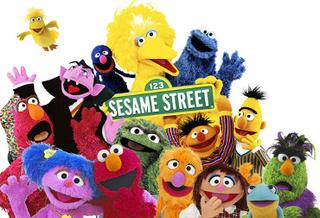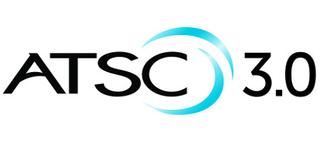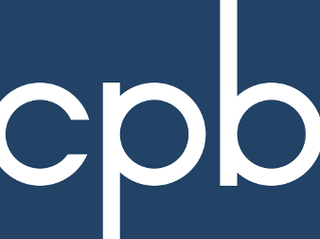ATSC 3.0 and Educational Media
It escaped no one’s attention at the dawn of radio, TV and the Internet, that electronic media presented some extraordinary benefits to education, beyond even “distance learning.” Domestically, as in much of the world, the government plays a big role in education. If you are educating your population for the obvious economic and social benefits, it’s immediately evident that electronic media is much less expensive, more efficient and a complement to the classroom and other means of instruction that is occasionally even superior.

It’s almost inconceivable that any educational program will ever pull a “50-share,” however a significant number of people reach out to learn, whether it’s NOVA or Frontline as appointment TV, webinars, MOOCs (massive open online courses), or any number of interactive programs that teach all ages. Just like the OSI model we’ve all come to appreciate, the success of the endeavor starts with that first layer, which in broadcast we call the platform.
My contention is that educational TV might benefit even more than commercial broadcast from the next generation of TV platform—ATSC 3.0 here in the United States and maybe someday, much of the rest of the world.
THE POTENTIAL
Let’s start with a great oversimplification of what 3.0 is. ATSC 3.0 wholly replaces ATSC 1.0 (also known by the name of its modulation; 8-VSB). It is not backward-compatible, but it is probably fairly easy and inexpensive to add a dongle (or whatever) to enable existing TV sets, even 4K displays, to receive both 1.0 and 3.0. ATSC 1.0 does a pretty good job of delivering (albeit rather inefficiently by today’s standards) good old-fashioned living room TV. It’s also not hard to imagine that soon, home (gateway) routers will have 3.0 reception built in as commonly as one finds Wi-Fi. One can also assume that the router manufacturers will build on 3.0 to provide super “routers” with DVR-like storage, commercial insertion support and more.
When you watch TV on your smartphone or computer, you are aware that the experience is very different. On the positive side, the computer content is driven by the viewer and it has everything you can do with video; on-demand, virtual DVR, and with more advanced multimedia content, including the ability to customize just about everything from the audio mix to the graphics and what information is displayed. On the negative side, the internet is a “best effort” service; so it’s all the things we associate with adaptive rate streaming service from the varying quality of service to the high cost of distribution. It’s why, ironically, the more people that are watching video on the internet… the worse it gets. On the other hand, the internet has a dozen “business models” that broadcasters do not have. It’s no small advantage that “advanced” (targeted) advertising, subscription, pay-per-view, and all of their variations are available to the Web world, but not to current broadcasters.
It’s an ongoing debate about whether the internet can economically keep up with video on demand. While claims that the internet service providers (ISPs) can keep up with the demand for more video vary from extremely optimistic to extremely pessimistic, the truth is likely somewhere in between. It’s difficult to imagine that a potential audience of 100-million TV’s viewing 4K live event video will anytime soon be affordably served by the ISPs.
Get the TV Tech Newsletter
The professional video industry's #1 source for news, trends and product and tech information. Sign up below.
If the wired internet is struggling to meet the ever-increasing demands of streaming video and other multimedia content, the Wireless Mobile Network Operators (MNO) have a much more difficult task. Even with expanded wireless spectrum from the TV repack, and the more efficient 5G technology, it’s doubtful that wireless capacity can expand fast enough, if ever, to answer the growing demand for video on mobile devices and customers who use the wireless network as their primary ISP.
According to an NTIA report on the state of internet use in the U.S., as of 2015, 27 percent of all households don’t have broadband. Cost plays a big role in this. ATSC 3.0 bypasses the internet’s pricey hard-wired/fibered and wireless architecture, including the last mile.
In short, if you took all of the good things of the internet and put them on a broadcast platform, you have ATSC 3.0, which bypasses the bad parts of the internet.
SOME ADVANTAGES OF 3.0
That broadcast platform means a lot; 3.0 is a different platform than we’re used to, and is designed to have an RF footprint that reaches into buildings, smartphones and devices, moving or stationary. It’s also designed to feed directly into a home’s Wi-Fi to more conveniently touch personal devices and the Internet of Everything (IoX) etc. What’s important to this discussion is the cost of moving data on 3.0 is much less than the cost of CDNs, ISPs and wireless carriers—and there are no walled gardens, throttling, last mile limitations, or waiting for buffers to fill, etc.

Educational TV has made very good use of the internet to increase its reach and convenience, but this requires the user to purchase connectivity for whatever device is used, and there are the persistent limitations of access—different encoders and servers for different device families make for a complicated environment getting even more complex. While the cost of connectivity via the internet continues to decline and the capacity continues to increase, there is no sign that within the next decade it can emulate the ubiquity, quality and efficiency we have become accustomed to with broadcast platforms.
The first advantage to educational TV is economic: Money spent on Content Distribution Networks (CDN) is better spent elsewhere and 3.0 disintermediates the CDNs. Some back of the napkin estimates put the cost per bit of 3.0 at 1/10,000 of a CDN. Even if that is two-orders of magnitude off, the cost differences are still colossal. More than cheap distribution, 3.0 opens the door to revenues from other business models TV couldn’t touch before, simply because some content can be sold transactionally. Information may want to be free, but education—especially quality programming—costs to produce and deliver. Hopefully, the general arts and education content that is distributed—financed by individual donations, corporate grants, and some tax money—will continue to be freely available to all. Without too much fussing over regulations, outdated or new, it appears that some portion of the 3.0 bandwidth can be used for distribution that pays for itself. Material that is distributed via internet-based e-learning and maybe a whole new class of material that is both quality and affordable could produce new revenues to grow and feed broadcast educational TV. Many educational TV systems are state-wide; having a fat pipe that cheaply reaches the geographical edges and every device in a state (or country with a little cooperation) just hasto have some monetized value. It will be interesting to see who knocks on that door as technology advances.
The second advantage goes to the mission of education. While platforms like virtual reality seem out of this world, technology moves quickly, and VR is perhaps the ultimate educational video tool. Even now, VR is being used in medical training and military and police training through simulation. But VR is inherently bandwidth-intensive and to take VR to the wider community, a standard like 3.0 is a practical prerequisite. While VR might be the ultimate in educational engagement—and being engaged in learning is paramount—one step down is interactive TV. Again engagement is higher than with traditional TV, but it needs a platform that supports the wide distribution of high-quality content with the back channel that 3.0 provides. Another step down is “computer learning,” a large category of educational tools and experiences that are based on interactive multimedia. Computer learning can benefit from the technical superiority of 3.0 over internet distribution, but more importantly, there is a smoother path to computer learning for educational stations via 3.0 than for those that compete with other suppliers that use the “best effort” and incredibly large and distracting open internet.
THE ‘PUBLIC’ SIDE OF BROADCASTING
The third set of advantages are more to the “public” side of public broadcasting. Educational TV has long nurtured and developed access tools like closed captioning and descriptive audio for viewers within the educational content. It has also been the platform for distribution for emergency alerting (including lately, AWARN), radio reading services for the blind, and other local specialized content. There are a lot of things that can benefit from statewide distribution and easy availability of receiving devices. Beyond EAS, as we mentioned above, 3.0 is a much better platform for the National Weather Service’s current 161 MHz voice-only transmitters and required special receivers, with the added benefit of multimedia including displaying maps and detailed textual directions. Replicating and maybe eventually replacing FM educational radio services has big advantages too. On 3.0, the reach of educational radio, the number of services possible, the quality of the services, and what multimedia things you can do—far beyond typical radio services—is beyond what most of us are willing to visualize. One has to imagine that there are many public uses for an IP/RF platform with the reach of 3.0 yet to be conceived.
The fourth advantage comes in the face of decreasing spectrum available to broadcast worldwide. ATSC 3.0 is much more efficient than 1.0; the codecs are twice as efficient as the legacy MPEG-2 used in 8-VSB. The payload can be larger also. While all of this is adjustable, 3.0 has maybe four times the content capacity per channel as its predecessor. More than that, 3.0’s single frequency network (SFN) capability means that what once required a series of channels to support satellite stations and translators, now can be done (within some relatively benign limitations) on one channel. Educational stations are suffering through the loss of financial support, and education is considered a bit of a “luxury” to some. In the U.S there is often the opportunity to sell off a prime UHF allotment and move to a VHF channel. At the moment, this looks like a wonderful endowment. After 3.0, going to VHF might look like a disastrous decision. In the worst case, going to a low-VHF assignment means that direct access to mobile devices—potentially more than half the educational target audience of the future—is unreasonable. High-VHF might work better than low-VHF and reach home routers for household WiFi access better than Low-VHF, but consider that FM radio (also high-VHF), which has a huge power-bandwidth advantage (on the order of 40x) over adjacent high-band VHF-TV requires the headphone or other external wire for an antenna—and it still works rather poorly. SFNs can help a lot for VHF, but one needs to look closely at how dense a VHF SFN has to be compared to a UHF SFN. Even the high VHF channels in 3.0 might not be a bargain in the end.

The fifth advantage is a total wild card, the impact of innovation. For the last half century, the only thing broadcast TV could do was linear real-time in-home TV. Educational over-the-air TV is an intricate and expansive ecosystem that has produced incredible content over the years. On the other hand, commercial “cable” educational TV has given us “Ice Road Truckers” and “Bridezilla.” The Web has a lot of information on a lot of sites, but the ecosystem to produce this content is limited compared to organizations like the Corporation for Public Broadcasting (CPB) and prone (to be polite) to distortion. Far ahead of any commercial broadcaster, educational TV has broken the OTA bonds and pushed onto the Web. There is an incredible track record for educational broadcasting innovating, only limited by imagination and the platforms they distribute on.
Personally, I don’t think lack of imagination is going to be the thing that holds back educational TV once it gets its hands on the next generation platform. My bet is that in 10 years this article will appear to be quaint and dramatically understated the impact of ATSC 3.0 on education.
Mr Baumgartner is TV Product Manager for Nautel
What do you think ATSC 3.0 can do for educational television? Send us your thoughts attvtech@nbmedia.com
For more on ATSC 3.0, seeTV Technology’sATSC 3.0 silo.
